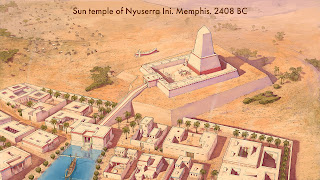The Old Kingdom of Egypt: Building an Eternal Legacy
TheOld Kingdom of Egypt, spanning from approximately 2686 BCE to 2181 BCE, was a pinnacle of ancient Egyptian civilization. It was a time of immense prosperity, remarkable architectural achievements, and the establishment of a powerful centralized government. In this article, we will delve into the fascinating world of the Old Kingdom, exploring its key characteristics, notable pharaohs, monumental constructions, and the enduring legacy it left behind.
1. The Rise of the Old Kingdom:
The Old Kingdom emerged as a result of political stability and the centralization of power under the pharaohs. Pharaoh Djoser, the third king of the 3rd Dynasty, played a significant role in establishing the foundations of the Old Kingdom. He commissioned the construction of the Step Pyramid at Saqqara, which marked a revolutionary leap in pyramid architecture.
2. Pyramid Age and Divine Kingship:
The Old Kingdom is often referred to as the "Pyramid Age" due to the grandeur and scale of the pyramids built during this period. Pharaohs, considered as divine rulers, invested heavily in constructing these monumental structures as their eternal resting places. The Great Pyramids of Giza, built by Pharaohs Khufu, Khafre, and Menkaure, stand as enduring testaments to the remarkable engineering and organizational skills of the ancient Egyptians.
3. Economic Prosperity and Social Structure:
TheOld Kingdom witnessed remarkable economic prosperity, primarily driven by agricultural productivity along the Nile River. A highly organized irrigation system and efficient farming techniques ensured surplus food production, enabling the growth of a complex society. The social structure was hierarchical, with the pharaoh at the top, followed by nobles, priests, scribes, artisans, and farmers.
4. Administrative and Legal Systems:
One of the key achievements of the Old Kingdom was the establishment of a centralized government. Pharaohs, assisted by a bureaucracy of officials, implemented an efficient administrative system that ensured smooth governance and economic stability. A sophisticated legal system protected the rights of individuals and regulated trade and commerce.
5. Cultural and Artistic Flourishing:
The Old Kingdom was a period of cultural and artistic flourishing. The development of hieroglyphic writing expanded literacy, and the construction of monumental structures provided a canvas for artistic expression. Exquisite statues, intricate reliefs, and vivid paintings adorned temples and tombs, depicting scenes from daily life, religious rituals, and the pharaoh's divine authority.
6. Decline and Legacy:
Despite its remarkable achievements, the Old Kingdom eventually faced challenges. Economic difficulties, political instability, and a weakened central authority led to a decline in the later part of the 6th Dynasty. The collapse of the Old Kingdom marked the end of an era, and Egypt entered a period of political fragmentation known as the First Intermediate Period.
Nevertheless, the legacy of the Old Kingdom endured. Its architectural marvels continue to inspire awe and fascination, and its administrative systems laid the groundwork for future dynasties. The pyramids, built as eternal homes for the pharaohs, stand as iconic symbols of the ancient Egyptian civilization, attracting visitors from around the world.
Conclusion:
The Old Kingdom of Egypt was a golden age of prosperity, cultural achievements, and monumental constructions. It established the foundations of centralized government, provided economic stability, and witnessed remarkable artistic and architectural advancements. Although it eventually faced decline, its legacy lives on, reminding us of the enduring grandeur and innovation of ancient Egypt.

